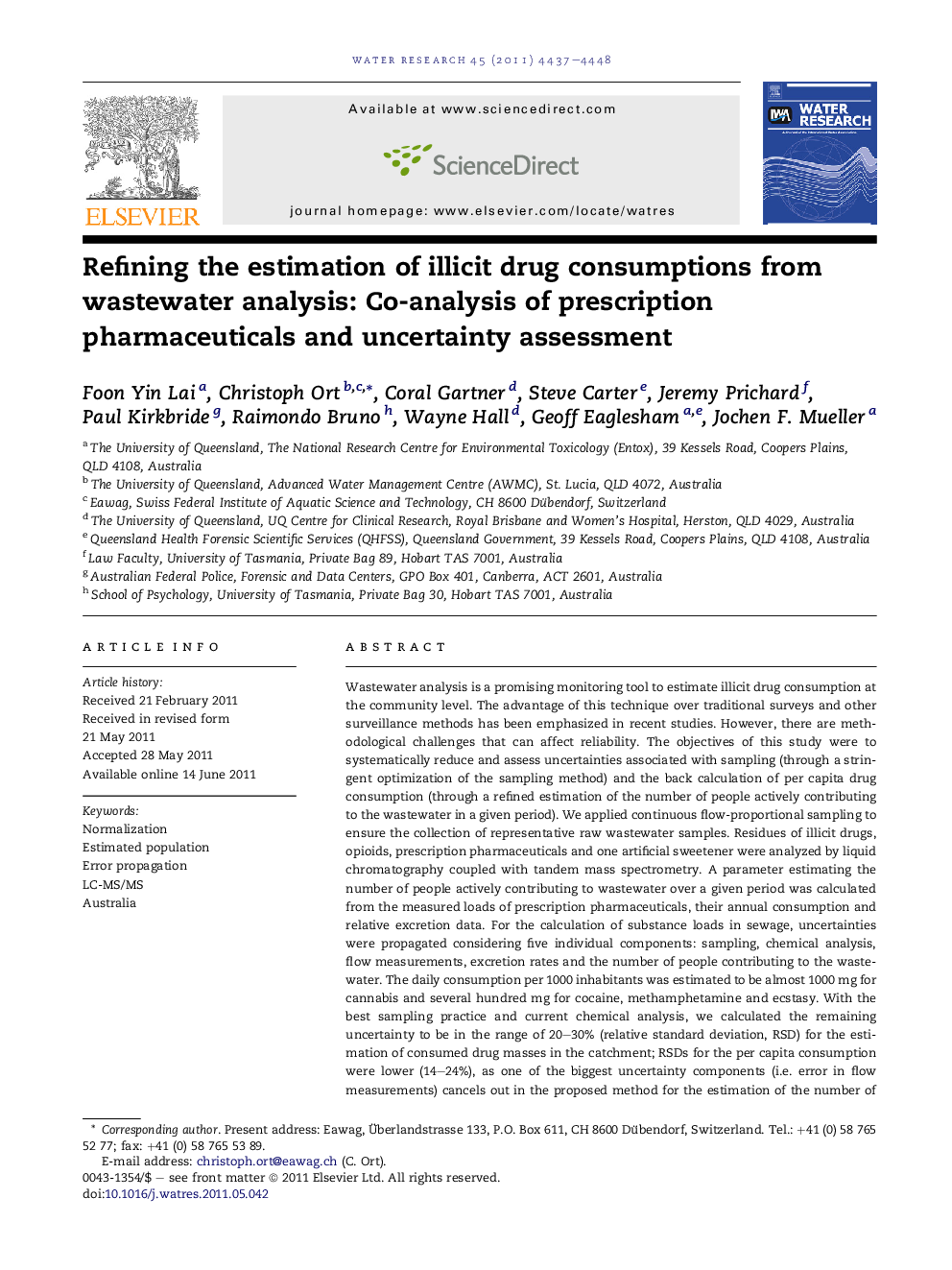| کد مقاله | کد نشریه | سال انتشار | مقاله انگلیسی | نسخه تمام متن |
|---|---|---|---|---|
| 4483302 | 1316884 | 2011 | 12 صفحه PDF | دانلود رایگان |

Wastewater analysis is a promising monitoring tool to estimate illicit drug consumption at the community level. The advantage of this technique over traditional surveys and other surveillance methods has been emphasized in recent studies. However, there are methodological challenges that can affect reliability. The objectives of this study were to systematically reduce and assess uncertainties associated with sampling (through a stringent optimization of the sampling method) and the back calculation of per capita drug consumption (through a refined estimation of the number of people actively contributing to the wastewater in a given period). We applied continuous flow-proportional sampling to ensure the collection of representative raw wastewater samples. Residues of illicit drugs, opioids, prescription pharmaceuticals and one artificial sweetener were analyzed by liquid chromatography coupled with tandem mass spectrometry. A parameter estimating the number of people actively contributing to wastewater over a given period was calculated from the measured loads of prescription pharmaceuticals, their annual consumption and relative excretion data. For the calculation of substance loads in sewage, uncertainties were propagated considering five individual components: sampling, chemical analysis, flow measurements, excretion rates and the number of people contributing to the wastewater. The daily consumption per 1000 inhabitants was estimated to be almost 1000 mg for cannabis and several hundred mg for cocaine, methamphetamine and ecstasy. With the best sampling practice and current chemical analysis, we calculated the remaining uncertainty to be in the range of 20–30% (relative standard deviation, RSD) for the estimation of consumed drug masses in the catchment; RSDs for the per capita consumption were lower (14–24%), as one of the biggest uncertainty components (i.e. error in flow measurements) cancels out in the proposed method for the estimation of the number of people contributing to the daily wastewater volume. In this study, we provide methodological improvements that substantially enhance the reliability of the estimation method – a prerequisite for the application of this technique to meaningfully assess changes in drug consumption and the success of drug intervention strategies in future studies.
► Continuous flow-proportional sampling mode applied to obtain representative samples.
► Estimating the number of people contributing to the wastewater.
► Quantification of the overall methodological uncertainty.
► Observed variation in drug use is greater than overall methodological uncertainty.
► First study in South-East Queensland, Australia.
Journal: Water Research - Volume 45, Issue 15, 1 October 2011, Pages 4437–4448